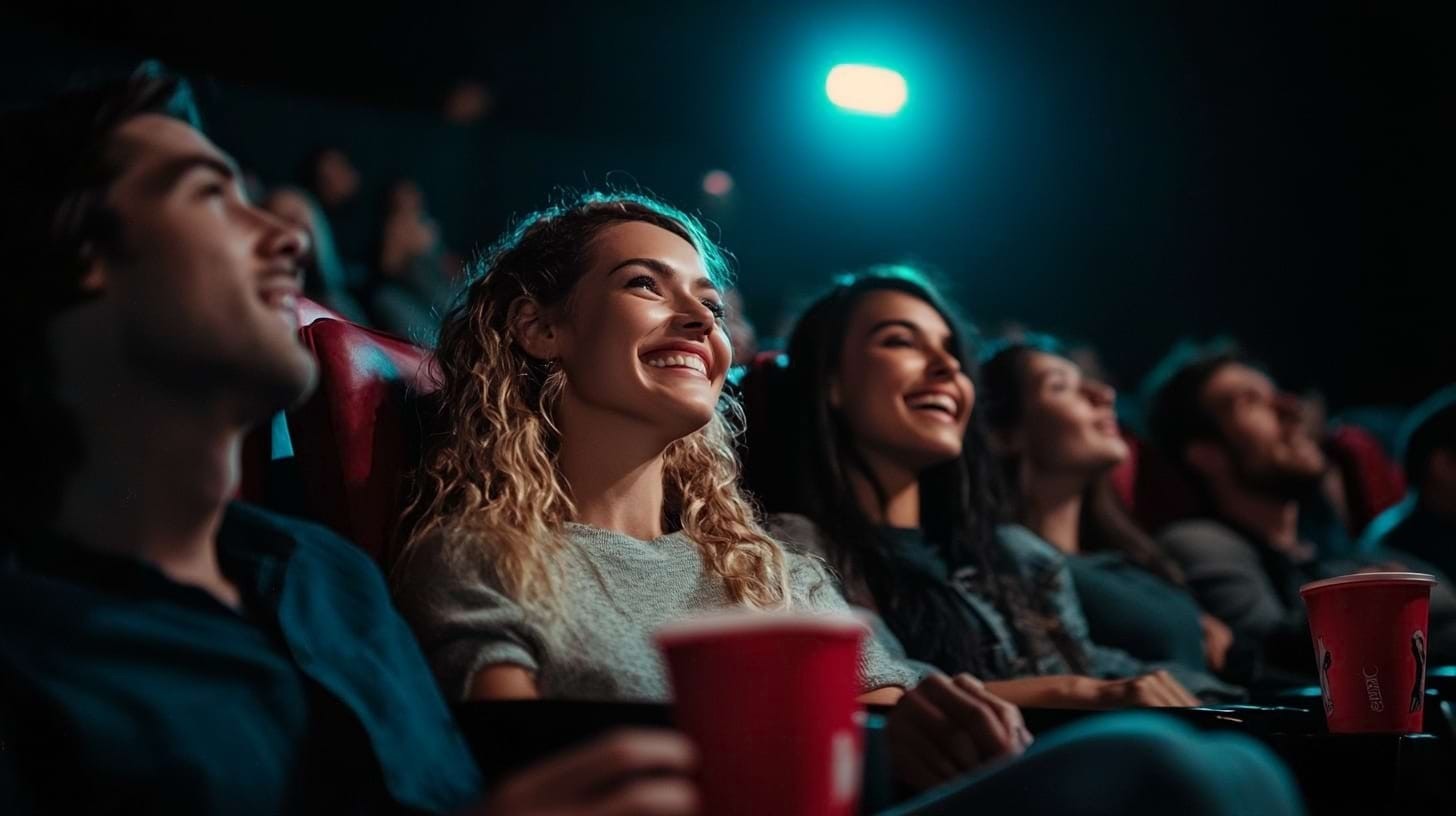The Power of Branding in Film: Strategies for Success
Branding is a strategic tool that shapes audience perception, drives marketing efforts, and determines a film's success. From iconic franchises to independent gems, a strong brand identity can elevate a movie to a cultural phenomenon.


The legendary producer Robert Evans once remarked that "getting people to see a movie is an art far greater than making one". This can be debated, but it is impossible not to take into account today's saturated market, where over 10,000 films vie for audience attention annually.
As we delve deeper into this comprehensive analysis, we'll explore the multifaceted dimensions of film branding: from psychological audience engagement techniques and cross-platform marketing strategies to the evolution of visual identity in the digital age. We'll examine how studios like NEON have revolutionized indie film branding, turning modestly budgeted productions into cultural phenomena through innovative social media strategies and guerrilla marketing tactics that generate much more engagement than traditional advertising methods.
The Role of Branding in Film 🎯
Branding in film transcends traditional marketing approaches, encompassing everything from visual identity to narrative positioning.
Key components of brand identity in the film include:
- 🎨 Visual Identity
- Typography (Think Woody Allen's consistent Windsor Light Condensed font)
- Color schemes (Wes Anderson's distinctive pastel palettes)
- Logo design (MGM's Roaring Lion)
- 🔊 Sonic Branding
- THX's Deep Note sound mark (created by Dr. James A. Moorer in 1983)
- John Williams' instantly recognizable "Star Wars" theme
- Universal's 1936 fanfare by Jimmy McHugh
Film Branding Strategy 🎬
A well-defined film branding strategy is essential for creating a lasting impression and building anticipation among audiences. This strategy includes defining the film's core themes, visual style, and tone, and ensuring these elements are consistently reflected across all marketing materials.
Successful branding strategies often start by identifying the target audience and crafting a narrative that speaks directly to them. A horror film might employ dark, suspenseful visuals and cryptic messaging to build intrigue, while a family-friendly movie would use bright, playful colors and relatable characters.
A consistent and clear brand message across social media, promotional events, and merchandising further strengthens audience connection and recognition.
Brand partnerships and collaborations are also powerful tools within a film’s branding strategy. Collaborating with brands that align with the film’s themes can extend its reach and generate buzz among a wider audience. A well-executed branding strategy doesn’t just attract initial viewership; it cultivates a dedicated fan base and increases the film's impact, helping it stand out in a competitive market.
The Impact of Branding on Film Success 📈
One of the most significant benefits of successful film branding is its ability to drive box office sales. A recognizable brand can attract a wider audience, leading to higher ticket sales. By creating a strong brand identity, filmmakers can position their film as a must-see event.
Moreover, branding contributes to the long-term success of a film by building brand loyalty. By consistently delivering high-quality content and maintaining a consistent brand image, filmmakers can create a loyal following that eagerly anticipates future releases. This loyal fanbase can significantly impact a film's box office performance, merchandise sales, and overall commercial success.
The Harry Potter Franchise 🧙♂️
The Harry Potter franchise is another example of the power of branding. By creating a rich and immersive world, J.K. Rowling has captivated audiences of all ages. The consistent branding across books, films, and merchandise has solidified the franchise's place in popular culture.
Techniques for Effective Film Branding 💡
Modern techniques for effective movie branding have evolved significantly, offering filmmakers innovative ways to connect with audiences and create memorable experiences.
Today, branding strategies integrate digital platforms, data-driven insights, and interactive content to build a film's identity and engage viewers long before release day.
The Power of Cross-Platform Marketing in Film 🌐
One of the key techniques for film promotion branding is utilizing social media storytelling. By sharing behind-the-scenes clips, character introductions, and teasers across platforms, filmmakers create a personal connection with potential fans. Social media channels also allow for real-time engagement, letting audiences react, comment, and even influence promotional content, deepening their investment in the film.
You can read more about marketing channels here.
The Marvel Cinematic Universe🦸♂️
The Marvel Cinematic Universe is a prime example of successful cross-platform marketing and visual identity. By consistently delivering high-quality content, engaging with fans, and leveraging various platforms, Marvel has built a massive and loyal fanbase.
Marvel has effectively utilized social media, merchandise, and video games to connect with fans and generate excitement.
Neon's Shadowy Marketing: The Secret to "Longlegs" Success ✨
Another great example is the marketing campaign for "Longlegs" (2024) by independent film studio NEON.
Instead of relying on traditional trailers, NEON opted for a more mysterious and intriguing branding strategy. They created a sense of anticipation and curiosity by releasing cryptic teasers, enigmatic social media posts, and even fake blog entries. This unique approach piqued the interest of horror fans and generated significant buzz online.
One of the most innovative marketing tactics was the release of a recording of Maika Monroe's heartbeat during a particularly intense scene. This raw, unfiltered audio clip provided a tangible connection to the film's terrifying atmosphere, further heightening anticipation.
NEON's success with "Longlegs" highlights the power of unconventional marketing strategies. By embracing digital platforms and creative storytelling, independent studios can compete with major Hollywood studios and captivate audiences worldwide.
The result of the marketing campaign is obvious: with costs of approximately $10 million, the film grossed $108.9 million.
VR and AR 🕶️
Another effective approach is immersive content, such as virtual reality (VR) experiences or augmented reality (AR) filters, which offer audiences a chance to interact directly with the film’s world. For instance, a VR tour of a movie's key location or an AR filter that transforms users into a main character brings the film experience into the digital lives of the audience.
Data Analytics 📊
Data analytics also plays a major role in modern branding. Now studios can analyze audience preferences and online behavior to tailor marketing materials more precisely, ensuring that trailers, posters, and promotional videos resonate with specific demographic groups.
In combining these modern branding techniques, filmmakers can craft a dynamic, multi-platform campaign that enhances brand awareness, fosters audience loyalty, and boosts a film’s visibility and success in an increasingly competitive market.
How "Star Wars" Transformed from a Single Film into a Global Brand Phenomenon 🌌
"Star Wars" began as a standalone sci-fi adventure in 1977, but it quickly transformed into a global brand phenomenon, reshaping the film industry and pop culture forever. Directed by George Lucas, the original film captured audiences' imaginations with its groundbreaking special effects, epic storyline, and iconic characters. What set "Star Wars" apart, however, was its strategic approach to branding and merchandising, which turned it into more than just a film - it became a cultural movement.
One of the key factors behind this transformation was George Lucas's vision for the franchise. Recognizing the potential beyond the movie itself, he retained the merchandising rights, a decision that would prove revolutionary. From action figures to lunch boxes, "Star Wars" merchandise flooded the market, allowing fans to take a piece of the galaxy far, far away home with them. The success of these products established a new model for film merchandising, generating significant revenue and creating a loyal fanbase that extended far beyond the cinema.
The expansion of the "Star Wars" universe through sequels, prequels, and spin-offs further cemented its place as a global brand. The original trilogy became a cornerstone of modern storytelling, leading to the development of a prequel trilogy in the late 1990s and early 2000s, which reignited interest in the saga for a new generation. Each film release was accompanied by extensive marketing campaigns, brand partnerships, and massive merchandising efforts, ensuring that "Star Wars" remained a household name.
Moreover, "Star Wars" tapped into diverse media platforms, including animated series, comic books, novels, and video games, which allowed the story to expand and deepen. Fans could immerse themselves in the "Star Wars" universe beyond the films, fostering a sense of connection and community. The creation of fan conventions and events, such as the Star Wars Celebration, provided dedicated spaces for enthusiasts to share their passion, further solidifying the brand's presence worldwide.
With Disney’s acquisition of Lucasfilm in 2012, the "Star Wars" brand saw an even greater expansion. New films, TV series on streaming platforms, theme park attractions like Galaxy's Edge, and ongoing merchandise ensured that "Star Wars" would continue to thrive as a global entertainment juggernaut. The franchise's ability to blend nostalgia with new content keeps fans engaged across generations, making "Star Wars" one of the most successful and enduring brands in the history of film.
The Future of Film Branding 🔮
In the competitive world of filmmaking, a strong brand identity is essential for standing out. With the help of AI platforms, filmmakers can leverage automated script analysis to build a clear, consistent branding strategy that not only enhances the film’s narrative but also drives marketing efforts. Whether it’s developing iconic visuals, creating a memorable logo, or ensuring that the film’s theme is echoed across all promotional materials, AI helps filmmakers craft a cohesive brand experience that engages audiences from pre-production to release.
Filmustage is an AI-driven tool that streamlines the process of script analysis and breakdown, providing invaluable support for filmmakers across all stages of production. By automating traditionally time-consuming tasks, Filmustage helps Assistant Directors, Line Producers, Directors of Photography, and VFX specialists save time, allowing them to focus more on the creative aspects of filmmaking, including branding.
One of the ways Filmustage aids in film branding is by breaking down scripts into key elements, such as props, characters, locations, and more, within seconds. This rapid analysis allows filmmakers to identify recurring visual themes and motifs that can be integrated into the film's branding strategy.
For example, suppose a film features a significant prop or location that will be central to its story. In that case, Filmustage can quickly highlight these elements, making it easier to create marketing materials that reflect and reinforce the film’s identity.
AI technology behind Filmustage can search the Internet for reference images, aiding in visualizing the film's brand. This feature is particularly helpful for art directors and marketing teams who need to develop a cohesive visual style that resonates with audiences. The Team Access feature enables collaboration across departments, ensuring that everyone is on the same page when it comes to branding decisions, from the color palette to key marketing visuals.
From Breakdown to Budget in Clicks
Save time, cut costs, and let Filmustage’s AI handle the heavy lifting — all in a single day.